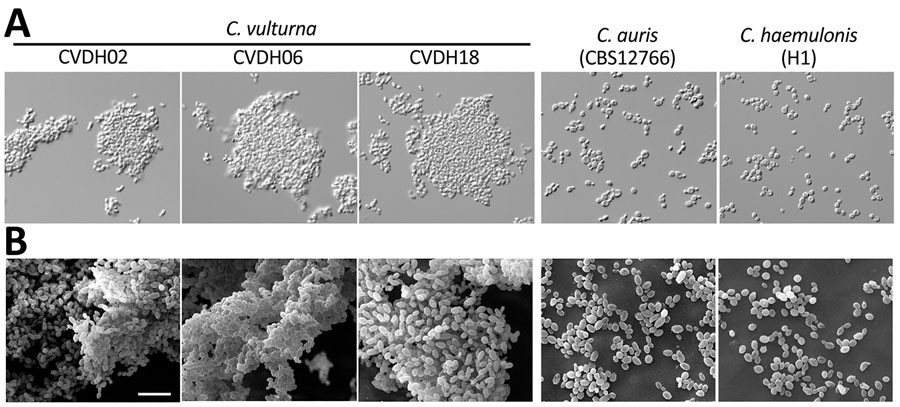Volume 29, Number 7—July 2023
Dispatch
Candida vulturna Outbreak Caused by Cluster of Multidrug-Resistant Strains, China
Figure 2

Figure 2. Morphologies of 3 representative C. vulturna isolates from 19 infected patients in Shanxi Province, China, January 1, 2019–October 26, 2022. C. auris (CBS12766) and C. haemulonii (H1) served as reference strains. A) Adhesion phenotypes of C. vulturna isolates grown in liquid Lee’s glucose medium at 30°C for 24 h. Strains CVDH02, CVDH06, and CVDH18 exhibited strong adhesiveness, whereas the C. auris and C. haemulonii reference strains grew as separate single cells under the same culture conditions. B) Biofilm formation of C. vulturna isolates. C. auris (CBS12766) and C. haemulonii (G7) served as reference strains. Biofilms were developed on silicone squares at 30°C for 48 h. Lee’s glucose medium was used for biofilm growth. Scale bar indicates 10 µm. Morphologies for the other 16 C. vulturna isolates and 2 C. auris strains are shown in Appendix Figure 3.
1These first authors contributed equally to this article.
2These senior authors contributed equally to this article.